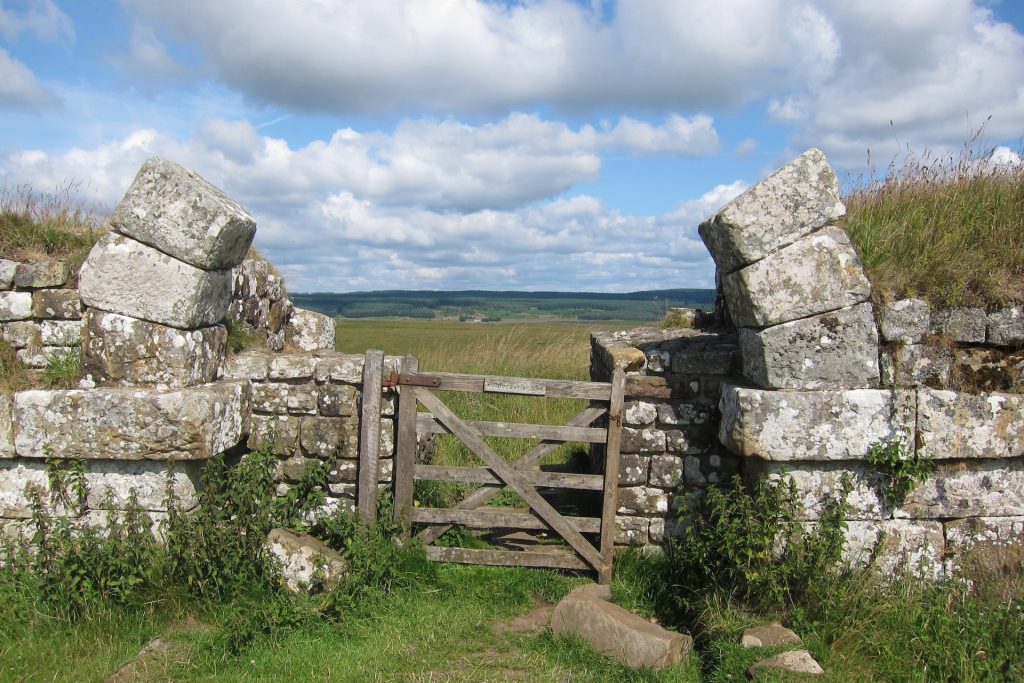If you’ve ever been traveling up the northern reaches of the UK, you might likely have come across the iconic Hadrian’s Wall, one of the country’s best-loved landmarks. However, it didn’t originally serve the purpose of looking pretty! It’s a remnant from the Roman days of old. You’re in the right place if you’d like to learn more – here are some fun facts about Hadrian’s Wall.
1. The Wall is centuries old, dating back almost to the start of the modern calendar.
Hadrian’s Wall was built in AD 122. It was built by Roman Emperor Hadrian, after whom the Wall was named, during his visit to Britain.
2. It was initially a defensive wall used to protect the interests of the Roman Empire.
Originally, Hadrian’s Wall was constructed to serve as a defensive fortification. It marked out the northern boundary of the Roman Empire in Britain. The Wall also served as a means of controlling trade and immigration along the northern frontier.
3. You’ll find Hadrian’s Wall extending across England’s northern reaches – and it’s amazingly long.
Hadrian’s Wall stretches across northern England, from the east coast to the west coast. It spans approximately 73 miles (117 kilometres)!
4. It’s a stone wall that includes lots of turrets and miniature castles.
Hadrian’s Wall is made of stone. It once had a series of fortresses, turrets, and milecastles along its length! In most parts, the Wall was about ten feet (3 metres) wide and stood around 15 feet (4.5 metres) high. The fortresses along the Wall included Housesteads, Vindolanda, and Birdoswald. These fortresses served as administrative centres and garrisons – pretty understandable, given the length!
5. It took many soldiers to raise Hadrian’s Wall.
The Wall was built by Roman soldiers from three different legions! These included the Legio II Augusta, Legio VI Victrix, and Legio XX Valeria Victrix. Thousands of Roman soldiers were then stationed along the Wall. They were there primarily to defend against incursions by northern tribes, specifically the Picts.
6. It is a World Heritage Site.
Hadrian’s Wall was designated as a UNESCO World Heritage Site in 1987. This was in honour of its historical significance – not surprising, given the fact UNESCO protects as many historical monuments and landmarks as possible.
7. There’s a famous trail along the Wall you can walk.
Nowadays, you can easily walk along the Wall thanks to the Hadrian’s Wall Path National Trail. The trail follows the course of the Wall, allowing hikers to explore the remains.
8. The Wall was abandoned for a long time.
The Wall’s importance declined over the centuries, and by the 5th century, it was largely abandoned as the Roman Empire withdrew from Britain. However, people still come to visit it and see it in all of its glory!
9. Sections of the Wall are still standing strong!
Despite enduring centuries of decay and abandonment, large parts of Hadrian’s Wall still stand strong to this day! In fact, it is one of the most well-preserved Roman frontier walls in the world – all the more protected thanks to UNESCO. It just goes to show that Roman soldiers really knew how to build long-lasting barricades!
10. Its cultural impact in the UK is absolutely massive.
Due to its majesty, it should come as no surprise that Hadrian’s Wall has had a lasting impact on British culture. It is often referenced in litreature, art, and popular media as a symbol of Roman Britain.
FAQs about Hadrian’s Wall
Why was Hadrian’s Wall built where it is?
Hadrian's Wall was built in that location to secure the Roman Empire's north-western border in Britannia. And that it did! Soldiers manned the Wall to protect the Empire – and it still stands proudly, for the most part, to this day.
Where is the best place to visit Hadrian’s Wall?
Currently, the best place to visit Hadrian's Wall is said to be the Walton Crags. It is between the Birdoswald Roman Fort and Housesteads Roman Fort and provides stunning views of the Wall.
Can you drive along Hadrian’s Wall?
You can see Hadrian's Wall from the A69. However, you will need to pay for parking along the Wall. Why not stretch your legs and give the trail a walk?
Further reading
https://www.english-heritage.org.uk/visit/places/hadrians-wall/
https://hadrianswallcountry.co.uk/
